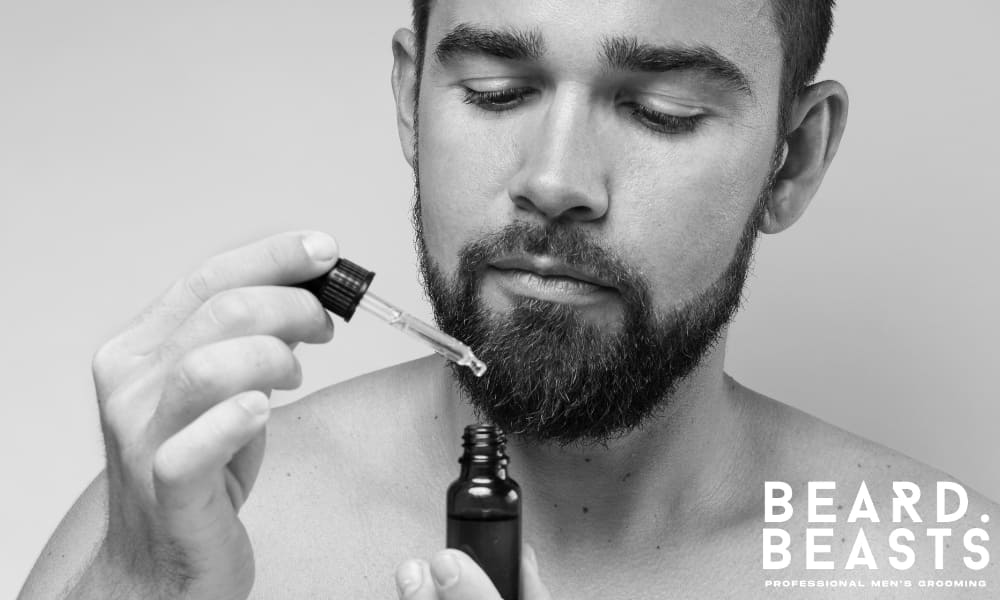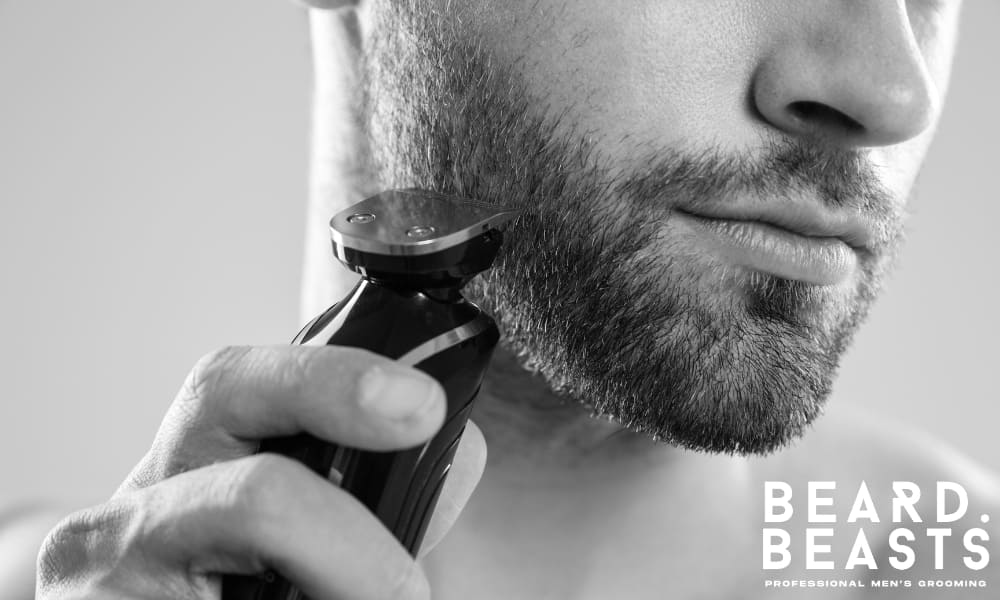Learning how to take care of a beard isn’t about following the latest grooming trend—it’s about building a standard. A well-maintained beard signals more than style; it reflects precision, self-discipline, and a man’s ability to present himself with purpose.
For beginners, the challenge isn’t lack of growth—it’s lack of strategy. Without a proper system in place, even the best genetics fall short. From daily maintenance to long-term shaping, beard care isn’t something to guess your way through. It demands clarity, the right tools, and consistency that’s built to last.
This guide lays the groundwork for results you can see—and standards you can build on. Whether you’re starting from stubble or growing into your first full beard, these principles give you more than a routine. They give you control.
Know Your Beard Before You Touch It

Every beard has its own blueprint—thickness, density, curl pattern, and growth rate. Understanding yours early helps avoid frustration and ensures you’re building a routine that actually works.
Coarse beards need more moisture. Patchy beards benefit from structured trims. Curly beards require detangling tools. What works for one man may sabotage another if applied blindly.
Your skin matters just as much. Oily skin may lead to clogged follicles and breakouts, while dry or sensitive skin often causes flaking, irritation, and beard itch. Without a plan to care for the skin beneath, even strong beard hair will underperform.
Tailoring your strategy from the start means fewer mistakes, better product choices, and faster visible results. This is the first move in learning how to take care of a beard with purpose.
Build a Core Routine You Can Actually Stick To

The best beard care routine isn’t built around trends. It’s built around clarity. And for beginners, that means locking in three non-negotiables: cleansing, conditioning, and grooming.
Use a beard wash two to three times a week. It’s formulated to clean facial hair and the skin underneath without stripping essential oils. Overwashing is a common mistake—especially in hot weather—so balance is key. On non-wash days, a warm water rinse is often enough.
Follow with beard oil or conditioner after cleansing. Oil works best on shorter or coarser beards, while conditioning balms are ideal for longer beards needing added control. Apply after patting your beard dry—never when dripping wet—to ensure proper absorption.
Then groom with intent. Comb or brush daily to train growth direction, prevent tangles, and evenly distribute product. A morning routine that takes five minutes can prevent weeks of breakage, irritation, or uneven growth.
Consistency is what separates lasting results from guesswork. When you’re learning how to maintain a beard, start simple—but stay strict.
Master the Tools That Shape Your Look
Every beard needs structure—and structure demands precision. While a core routine keeps your beard clean and soft, shaping tools are what refine your look and define your standards. The right gear helps you control your growth pattern, maintain symmetry, and avoid overcorrection.
Start with a dedicated beard trimmer that offers multiple guard lengths. This lets you maintain your beard in phases, not guesses. Add a pair of sharp beard scissors to target strays and clean up the cheek or mustache area without disrupting your overall shape.
For clean edges, a detail trimmer or safety razor gives better results than multipurpose razors that tug or create harsh lines.
Avoid using low-quality tools. Dull blades and plastic combs do more damage than good—causing pulling, beard split ends, and uneven cuts that set you back instead of moving you forward.
Learning how to maintain a beard isn’t just about what you do—it’s about what you use to do it. Choose tools that support control, not shortcuts.
Fix the Skin—Then the Beard Follows
Most beard problems begin where you can’t see them—at the skin level. Dryness, clogged pores, inflammation, and irritation all weaken the base your beard grows from.
When the skin is neglected, the hair becomes brittle, patchy, and harder to manage. No product can compensate for poor skin health.
Hydration is the first line of defense. Apply a beard oil daily, especially after washing. Look for ingredients like jojoba, argan, or grapeseed—light, non-comedogenic oils that nourish without clogging follicles. Heavier oils or synthetic fillers may leave residue and worsen irritation.
Gentle exfoliation once or twice per week helps clear dead skin, reduce buildup, and support natural regeneration. If your beard itches, flakes, or feels tight, your skin barrier may be compromised—and fixing that takes priority over styling.
Your grooming results depend on your skin’s condition. Treat the foundation, and the beard will follow—with strength, clarity, and better long-term growth.
Trimming Isn’t Optional—It’s Foundational

One of the most common mistakes beginners make when learning how to care for a beard is avoiding trims. The logic seems simple—less trimming equals faster growth. In reality, untrimmed beards grow unevenly, develop split ends, and lose their shape early.
Trimming is what gives your beard definition as it matures. Start with defined borders: shape the neckline just above the Adam’s apple and clean up strays on the cheek line to maintain structure without looking over-shaped. Use a trimmer with a guard to maintain even length, and sharpen the outline with scissors when needed.
The goal isn’t reduction—it’s direction. Every few weeks, take time to assess your growth, correct asymmetry, and reinforce your shape. Even growing beards benefit from small, intentional adjustments.
Trimming is a form of training. Skip it, and your beard will grow. Use it strategically, and your beard will develop.
Style With Purpose, Not Just Product
Styling isn’t about piling on product—it’s about creating intention. Whether your beard is short, mid-length, or full, the right shape and finish should complement your features, not distract from them.
Start by selecting a beard shape that fits your face. Angular jawlines pair well with fuller growth, while rounder faces benefit from structured lines and tighter sides. Your beard style should support visual balance.
When applying product, less is often more. Use a touch of balm or soft wax to control flyaways and reinforce shape—especially in dry or windy conditions. Avoid overly glossy or stiff finishes that can make your beard look artificial or overworked.
Consider your lifestyle, too. If you’re active or outdoors often, choose a lower-maintenance shape with clean lines. If you work in a professional environment, keep the neckline defined and bulk controlled.
Good styling should look effortless, not forced. When done right, your beard looks like it belongs—not like it’s trying too hard.
Think Long-Term: Growth, Health, and Identity
A well-kept beard isn’t built in a week. It’s the result of deliberate care, month after month. Learning how to take care of a beard means accepting that visible results often come slowly—but consistently. And that’s exactly what makes the outcome stronger.
Don’t fall for quick-fix products or one-size-fits-all advice. Instead, commit to a structure that works with your beard’s pace. Use the right tools. Stick to your routine. Monitor your skin’s health. When something feels off—whether it’s dryness, breakage, or uneven patches—adjust the system, not your standards.
More importantly, grow a beard that reflects you. Style it in a way that complements your lifestyle, wardrobe, and personal image. Avoid jumping between looks based on trends or pressure. When your grooming choices feel deliberate, your beard becomes part of your identity—not an accessory you have to explain.
The difference between a beard that fills space and one that defines presence comes down to discipline. Let yours be intentional.
Final Thoughts: Start Strong. Stay Disciplined. Own the Result.
Learning how to take care of a beard isn’t about complexity—it’s about clarity. The men who maintain strong, structured beards don’t rely on guesswork or expensive routines. They commit to a system, execute it with precision, and refine it over time.
From cleansing and trimming to shaping and styling, every part of your routine either supports your beard or sabotages it. The difference lies in consistency, not perfection.
A great beard doesn’t happen. It’s developed. And when you take full ownership of that process, the result speaks before you do.





